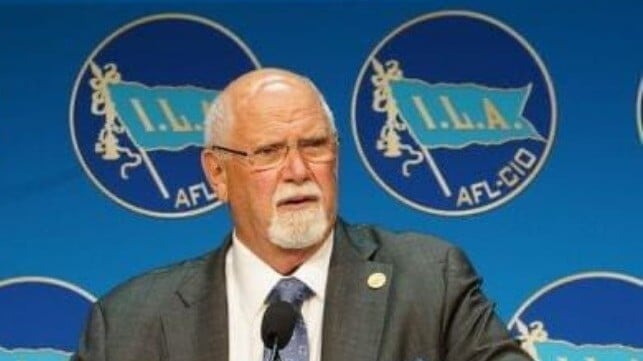Danger of strikes in ports on the East and Gulf coasts of the USA “becomes more likely”

With the threat of strikes looming at U.S. East Coast and Gulf Coast ports, the International Longshoremen’s Association is ramping up its rhetoric, pointing out that the current contract has only 80 days left to run. Talks have continued to stall after the union claimed that Maersk’s APM Terminals uses an automated gate system and may be encroaching on its jurisdiction.
The union’s strategy was to resolve all local authority contracts and then begin negotiations on the master contract. However, they canceled negotiations that were supposed to begin a month ago, citing the automation issue and saying they would not begin talks until the dispute over the system in Mobile was resolved.
“With only 80 days left until the end of our current contract, we are waiting for USMX,” said ILA President Harold J. Daggett. “Violations by some of their members of our current master agreement have led us to cancel negotiations with USMX scheduled for early June.”
In his latest statement, he sought to point out that negotiators for the union and employers represented by the United States Maritime Alliance (USMX) are “running out of time” to prevent a coast-wide strike on October 1, 2024. The union now says it is “increasingly likely” that a strike will occur.
The ILA has a clear stance against increasing automation at ports and highlighted the Auto Gate system to underline their position. They claim that APM introduced the system, which allows trucks to be processed without ILA workers. In addition, they claim they have observed “an increasing number of IT workers at marine terminals” and are concerned that APM Terminals is encroaching on the union’s jurisdiction. They also questioned whether the system is being used at other ports.
Economists and retail and apparel unions have warned of the potential impact of a strike on already fragile supply chains. There have been repeated calls for the Biden administration to step in to bring the two sides to the negotiating table and guide the process. The Labor Department helped resolve the 2023 issues with West Coast ports, which had spent a year negotiating their contract for longshoremen.
Daggett responded to those calls: “We will not be engaging in discussions about extending the current contract, nor are we interested in seeking assistance from outside agencies that interfere in our negotiations with USMX,” said President Daggett. “This includes the Biden administration and the Department of Labor.”
Experts have doubted that the union would carry out a potentially devastating strike five weeks before the U.S. presidential election. Daggett assures that members are 100 percent behind the union leadership and are ready to “take to the streets” if the union’s wage demands are not met.
In addition to blocking automation at ports, the ILA is demanding recognition for dockworkers’ efforts to keep ports running during the pandemic. The West Coast union, the International Longshore and Warehouse Union (ILWU), agreed to a new contract a year ago that included a 32 percent wage increase over the six-year contract, according to Reuters.
The ILA and USMX, as well as their predecessor organizations, have a long history of positive contract resolutions. Both the 2018 and 2012 negotiations were concluded without work stoppages, and 10 contracts have actually been concluded since a strike in 1977.



